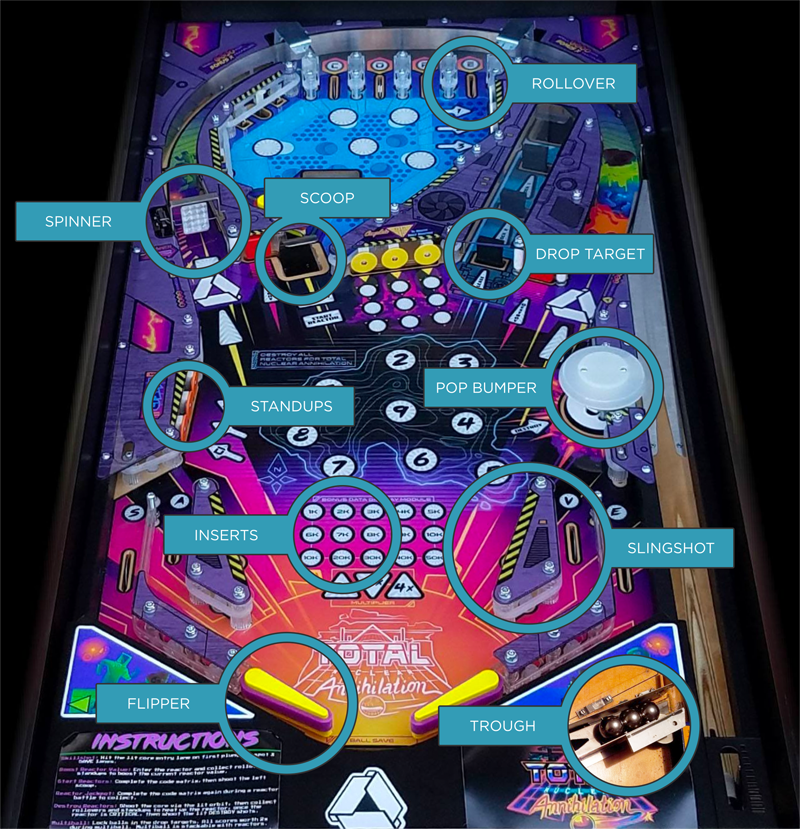Basics
Pinball Makers is focused primarily on providing practical, real world information for the creation of pinball machines from scratch, but there is a large segment of people who are interested in building a game but do not have experience with the basic components involved inside a pinball. This section is meant to help those people understand the basics of what makes up a pinball machine in terms of the mechanical parts and electronics.
Mechanical
Although every pinball machine is different, the basic principle is that a steel ball rolls on a wooden surface, interacting with switches and mechanical devices that either passive (such as rubber bumpers) or active (flippers, slingshots), and information is passed to the player via lights and displays. Here is a diagram showing some of the devices you will find in most pinball machines.
From the top:
- Rollover: A switch located on the underside of the playfield that is triggered when a ball rolls over it. They can be slot switches, or star rollovers, or even inductive switches you cannot see from the topside.
- Spinner: The ball hitting the flat part of the spinner causes it to spin in place, activating a switch for each turn.
- Scoop: A ball enters from the top of the playfield to under the playfield. At that point it may enter a Subway and travel to a different part of the playfield, or it may simply rest in place to be ejected back out, similar to a Saucer.
- Drop Target: When hit by the ball, it drops down into the playfield so that it cannot be hit again, usually exposing other targets or ball paths behind. They come in singles, banks of multiples, and can sometimes be computer controlled to drop without player interaction.
- Standups: These are switches that sit above the playfield and are activated by the ball.
- Pop Bumper: A device that detects a ball nearby via the plastic ring on the bottom that fires a coil and drops a ring to propel the ball in the opposite direction.
- Inserts: Clear or coloured plastic disks or other shapes that have lights - either incandescent or LED - underneath that are controlled by the game electronics.
- Slingshot: A mechanism comprising one or two standup switches (without plastic shields) and a kicker mechanism that when activated by the ball, kicks out in a single direction.
- Flipper: A player controlled bat that propels the ball in multiple directions.
- Trough: The storage tray that holds all the balls used in the game that receives the ball and serves it to the shooter lane as needed.

